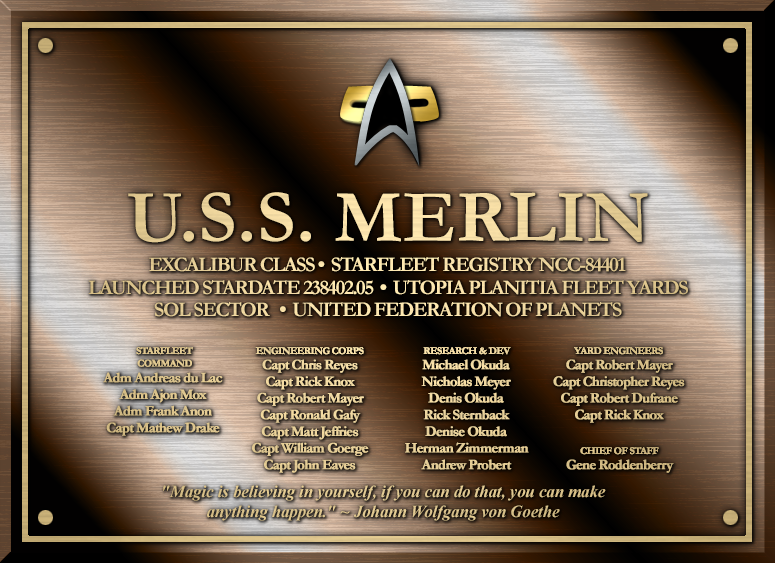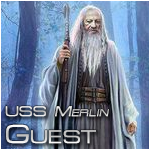The Sim

On 7 December 1941, shortly after the Navy of the Empire of Japan launched its historical attack on Pearl Harbor, they realized they had "awakened a sleeping giant, filling it with a terrible resolve." By 1945, the Japanese would fail to defeat the "giant" they had stirred. Centuries later, when mankind finally reached the stars at speeds far exceeding that of light itself, a grand power from a distant part of the galaxy known as the Dominion would also awaken another giant, the United Federation of Planets, the former losing to the latter by 2375.
It was in response to the terrible Dominion hostility that many ambitious defense projects were created by the Federation, while other ideas that were previously in doubt, or still in the early design phases, were pushed forward. One such idea that reached monumental proportions beyond conventional expectations was that of the Excalibur Class starship. Of this new breed of space-faring vessel was the prototype USS Excalibur, and its sister ships Camelot, Galahad, Lancelot, and...the USS Merlin.
In years past, when it appeared that the summit of late 24th century starship design had been reached with the Sovereign Class, Starfleet drew the proverbial sword out of the stone intended to cut a bold, enduring path into the 2400s, and possibly beyond. In true keeping to the legend of King Arthur naming motif, the Merlin was launched by the early 2380s, along with her sister ships, not to do battle with an already defeated Dominion, but to serve as a lofty representative of Federation policy in the never-ending pursuits of peace and scientific exploration.
However, no two ships of the same core design are ever exactly alike to the trained eye. Though not originally intended by stock design, Merlin was built with the potential goal of allowing specialized future expansion to its propulsion systems, possibly enabling another attempt at transwarp drive technology. Although nothing has yet to come of this in actual practice, the unused expansion capabilities, loosely based upon reverse-engineered Borg technology, nevertheless remain.
